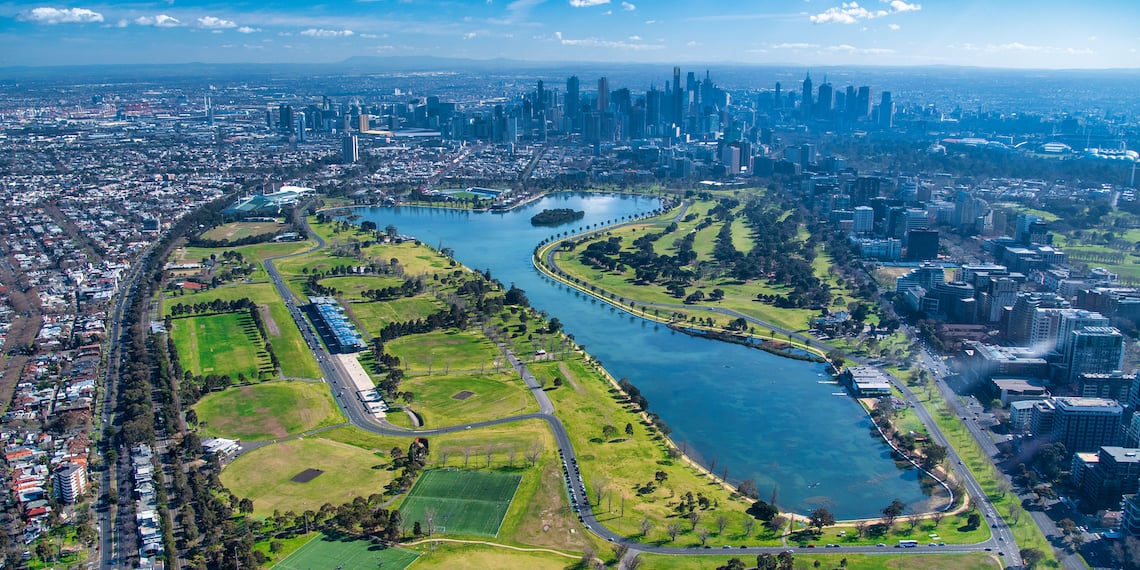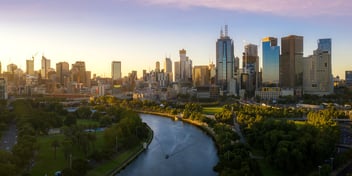Utilities unite to plan for Melbourne’s water future

Despite being consistently ranked as one of the world’s most liveable cities, Melbourne is projected to face water security issues under a changing climate. To prepare for the future now, Greater Melbourne’s water utilities have united with a long-term plan.
Last month, Melbourne’s water corporations launched the Greater Melbourne Urban Water and System Strategy: Water for Life plan, a shared strategy aiming to secure Melbourne’s water supplies for the next 50 years by delivering long-term solutions with the community.
Developed by Greater Western Water, Melbourne Water, South East Water and Yarra Valley Water, the strategy aims to balance Melbourne’s water needs by increasing efficiencies, diversifying water sources and using new water supplies.
Speaking on behalf of all four water organisations, Greater Western Water Managing Director Maree Lang said one of the most crucial aspects of the new strategy is for it to be acted upon now.
“As water corporations we share a common goal: supporting a healthy environment, strong economy and liveable communities,” she said.
“We’re working to tackle the big challenges of climate change, population growth and urbanisation that are putting more pressure on water supplies.
“The findings show that keeping storages high and building system resilience will be key to managing future demand and climate variability.
“It’ll take sustained, coordinated efforts from all of us, and the best time to act is now when water storages are high and we have the space to make good decisions that set us all up for a secure future.
“Our water storages can change quickly, so it’s appropriate that this strategy looks beyond the short term. It builds on the work we’re already delivering to provide Greater Melbourne with a secure and sustainable water supply for the next 50 years.”
Strengthening supply
Lang said one of the strategy’s key focuses is on increasing the efficiency of existing water systems, which will require concerted effort and teamwork.
“Making water systems as efficient as possible and conserving all we can are the most cost-effective ways of reducing pressure on supply,” she said.
“We want to be more efficient so we can provide extra water for rivers and find opportunities to return water to Traditional Owners.
“We’re also increasing the use of diverse water sources and looking into the options for a more climate resilient supply of manufactured water. Our focus is on getting everyone working together on this.”
In terms of consumer-focused conservation, Lang said the Melbourne-wide Make Every Drop Count campaign will continue, but that a joint water efficiency plan is also under development.
“We’re helping our communities conserve water, such as through the Make Every Drop Count campaign to keep household usage at 150 litres per person per day, and through smart use of resources like recycled water for agriculture,” she said.
“We’re also developing a joint water efficiency plan to improve the resilience and security of our water supplies into the future.
“Some of the initiatives supporting this are uplifting water efficiency in community housing through the community housing retrofit program, our shared commitment to the Schools Water Efficiency Program, as well as our continued focus on water main renewals and repairs to reduce water leaks.”
Lang pointed to the need for the addition of new water supplies to support agriculture, industry and jobs as well as environmental, cultural and recreational needs into the future.
“The amount of water we have available can change quickly. Maintaining high storage levels helps ensure we can adapt while having time to plan and make system improvements,” she said.
“We need to add alternative water supplies such as desalination, recycled water and stormwater to our existing system within the next 10 years. We also need to make several supply system augmentations over the next 50 years.
“Planning now will ensure we can deliver on these initiatives and future proof Greater Melbourne’s water supply.”
Working together
Aside from the utility collaboration behind the plan, the strategy is also a shared plan with Traditional Owners and the community, Lang said.
The strategy’s vision was independently developed by the Water for Life Community Panel with a set of criteria to assess future options for water security through a deliberative process, overseen by external facilitators.
“The involvement of Traditional Owners and communities as partners is an exciting aspect of the strategy,” Lang said.
“We worked with Traditional Owners throughout the strategy development process to ensure their priorities and cultural values were shaping the decisions we made.
“And we took a community-led approach, with an independently recruited community panel shaping the vision alongside us.”
In recognition of Traditional Owners’ status as partners in water management and respect for their self-determination, Melbourne water corporations aim to continue to strengthen collaborative relationships with each of the formally recognised Traditional Owner groups across the service region.
These include the Bunurong, Dja Dja Wurrung, Gunaikurnai, Taungurung, Wadawurrung and Wurundjeri Woi Wurrung Traditional Owner groups.
Together, Melbourne’s water authorities and Traditional Owners groups co-developed key aspirations to support common objectives and specific on-Country objectives for Traditional Owners.
Interested in taking a look at the Water for Life plan? Access the strategy here.

